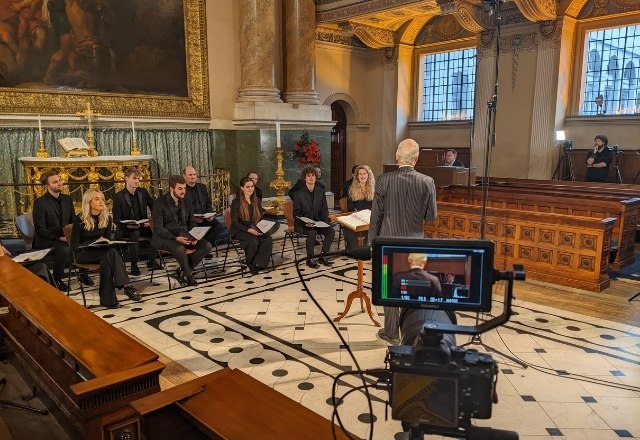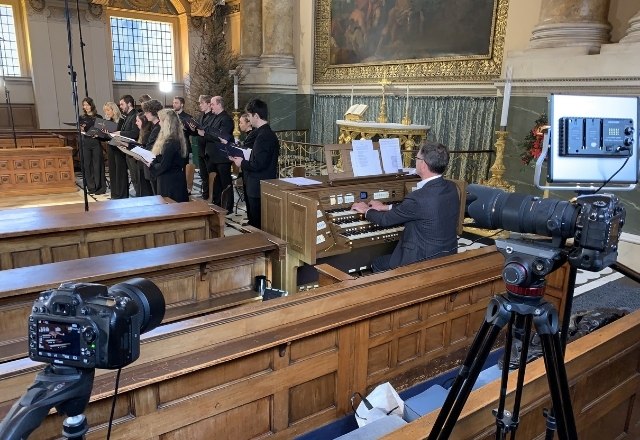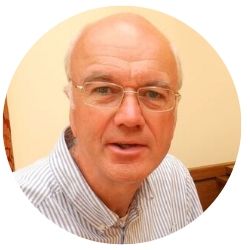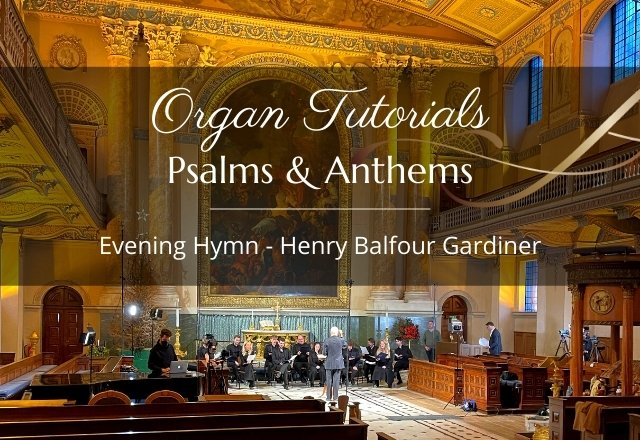The splendid Evening Hymn is arguably the best-known, and best, piece written by Henry Balfour Gardiner — apparently a great uncle of the present-day conductor Sir John Eliot Gardiner.
Such is the quality of this stirring anthem that it seems a pity we don’t have much else of note by Balfour Gardiner for church choirs to feast upon. Reportedly he was one of those composers that was very hard on his own music, and possibly destroyed quite a lot of it, giving up composing later in life. Such composers often only bequeath to us tantalising “gems”, leaving us to wonder what their second best was like.
Ralph Allwood loves this piece
Ralph Allwood, rehearsing the choir in this video, clearly loves the piece, extolling its rich harmonies and masterful organ accompaniment. The composer cleverly builds tension in the organ introduction, using harmony that evolves slowly over a pedal note in the bass, with added sixths, sevenths, and so forth. “It’s very, very clever indeed!” suggests Ralph to the choir.
The work is based on the Latin text Te lucis ante terminum, strictly a hymn sung at the late-evening Compline service, but more commonly used these days at Evensong. The anthem is usually sung in Latin (as here) and is really a prayer for God to keep us from evil “things that go bump in the night”. (The English translation is shown at the end of this commentary.)
The central verse, which speaks of ill dreams and phantasms, has a somewhat ghostly, ethereal quality that requires the unaccompanied choir to stay closely in tune before the organ comes in again. The rich chromaticism, with sudden dynamic comings and goings, preceded by the organ dropping back to undulating celestes, adds to a sense of eeriness.

How to achieve a seamless build-up during the introduction
In discussion with Mark Shepherd during the rehearsal, Ralph asks how the organist is to achieve a seamless build-up during the introduction. Mark explains that this is usually done with a combination of pistons and the swell pedal. Generally, when you add to the swell, the box needs to be closed rapidly and then opened again slowly. The great can be increased when the box is fully open again, the bump hopefully masked by the louder swell.
Mark and Ralph have a discussion about whether the reeds of the swell should be in the mix from the start, which allows a steadier build-up using just the swell box, but it means one gets the “snarl” of the reeds right from the beginning. The alternative is to start with a more subtle swell registration, but to risk a few potential “clunks” as pistons are added. Everyone present seems to agree that the latter sounds better.

The rehearsal lasts some twenty minutes, before a final polished performance. During the session we learn a great deal from Ralph and Mark about the way in which the piece is structured, the subtleties of choral performance, and the role of the organist.
English translation of the Evening hymn
To Thee, before the close of day
Creator of the world, we pray
that with Thy wonted favor, Thou
wouldst be our Guard and Keeper now.
From all ill dreams defend our eyes,
from nightly fears and fantasies:
tread under foot our ghostly foe,
that no pollution we may know.
O Father, that we ask be done
through Jesus Christ Thine only Son,
who, with the Holy Ghost and Thee,
shall live and reign eternally.
Amen.

I’m a retired academic, with a background in music and audio engineering. I’m currently a consultant for Viscount & Regent Classic Organs, as well as being a freelance organist, including a role as organist/choirmaster at St Mary’s, Witney. I sing bass with Oxford Pro Musica Singers and the Cathedral Singers of Christ Church, Oxford.



